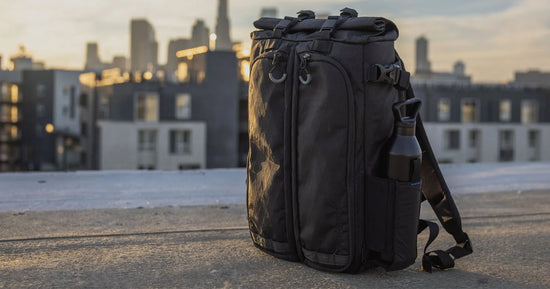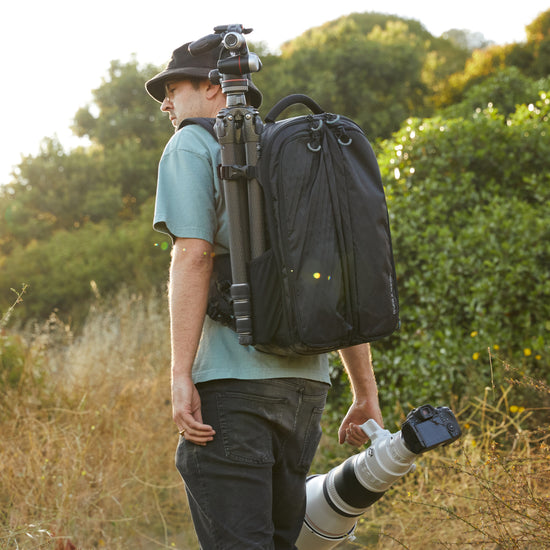Jodie Willard is an International Photojournalist who specializes in disaster relief work, focusing on women and children that have been displaced by war, famine or natural disaster. We sat down with her to discuss her beginnings, photos that inspire her and her current photo projects.
I saw that you were a photojournalist prior to your wildlife work. How did you get started?
My husband at the time had become gravely ill, and as a way to heal I picked up a camera which I found profoundly peaceful and rewarding. Later, I decided to attend Brooks Institute of Photography in Santa Barbara. Looking for a mentor, I reached out to Steve McCurry, we agreed to meet in Bangkok and then took off to Bhutan, where I was able to watch and learn from a master photojournalist.
In 2002, a friend mine, Joan Almond, reached out and asked if I wanted to fill her spot as the photojournalist for the International Rescue Community in Sierra Leone near the end of the civil war, that’s where it all started. I began working with NGOs for the next ten plus years. I have worked for Direct Relief International, The Women’s Committee, Bill Clinton as special Envoy, and IRC. I have covered all major natural disasters, most notable 2004 Sumatra Indonesia, 2005 Kashmir, Earthquake 2011 Sendai Japan, Super Typhoon 2013 and many US disasters.
My photography was based around natural disasters, and war aftermath, primarily women and children displaced by war and natural disasters. My global advocacy work would be presented to governments to effect change and provide aid for these women and children who were abused during war or natural disasters. This work was incredibly moving, it never fell short with me that although these people had been through terribly unspeakable abuse and tragedy, they would still welcome me with a warm smile and share their hope for the future, a life lesson learned well by me.
That is an amazing way to start your career. So how did you decide to transition from photojournalism to the more nature-focused photography you work on currently?
I was in Pakistan after the earthquake (2005 Kashmir Earthquake). We were in the western region when we got into a car accident. The car was unusable, so we had to walk down the Western Slope. This which was extremely dangerous at the time because a week earlier our government had just bombed a local community killing many people. We stopped at what we thought was a school, but it was an Al Qaeda camp operation, we were immediately separated from each other, which would ultimately be for hours. Lucky another NGO had witnessed us going in to the camp and later was able to assemble help for our release.
Feeling a bit lucky to be released, I realized I needed to go in a different direction. As photojournalism had changed, we now had targets on our backs. It was just such a dangerous time to be a journalist; Daniel Pearl’s beheading had just been a month earlier in the same region.
So, I was left thinking “How can I pursue photography in a way that will keep me relevant.” I returned home and had a meeting with an editor from National Geographic, she recommended I take my work in a different direction and cover the front end of storms along with polar regions. In 2012, I started photographing the polar regions; I have been to the Antarctic twelve times now, the Arctic eight, along with seven Iceland trips. This new direction was so compelling to me. I absolutely fell in love with wildlife and the real need for conservation work and the animals that do not have a voice, my focus right now is primarily the polar regions.

A Super Cell in Oklahoma
I think there are still many people who see photojournalism as a dream or end goal. You discussed the dangers as journalists began to be targeted. Could you tell me about some of the other difficulties of being a photojournalist?
As you know, photojournalism has always been a male-dominated field, although many women have made their mark in history. I personally found trying to balance a family life as a wife and mother was very challenging. At first, people would question me as a mother putting myself in dangerous situations, "how could you leave your children'? The head of the school would call me in and suggest I was a bad parent. I did point out "would you have those same comments if I were a man"? I had to dig deep as I strongly felt photojournalism needs women’s viewpoints as well.
Frankly, I found many more doors opened because I was a woman, they seem to trust me more.
The pressure I put on myself was immense, but I felt it was really important for my children and other women to continue to push those barriers.
With that said, there are a lot of added dangers as a woman in the harsh environments where I was sent on assignment. A lot of my work was going into a place that was just wiped out. I would fly into a disaster and try to build my alliances on the plane, so I’d have resources by the time we landed. There would be no power, transportation, food, places to sleep. There were times I slept in half a hotel room: half of it was gone because of the earthquake, with no power or water, no place to go to the bathroom etc. Also, safety as a woman was also a big concern, I’m sure you understand what I am talking about.
A lot of those difficulties would have never occurred to me, especially the part about the principal calling you.
As far as your photography goes, I’d like to know who some of the photographers were who inspired you to get started. If you have different ones, maybe you could tell us about the ones who inspired your photojournalism and then to the ones who inspired your nature photography.
Steve (McCurry) 100% for my photojournalism. I love his work. I know a lot of great photographers personally, but I think he’s one of the best. For wildlife, I think Paul Nicklen is a fabulous wildlife photographer. He used to be with National Geographic, but now he works with his own organization Sea Legacy as a conservation photographer. Sally Mann I have great respect for. As a photographer, I think it is very important to have a mentor and others who inspire you. I have a wonderful photography book collection that I have built over the last 20 years because I believe you need to see the work of other fellow photographers for inspiration. I strongly believe in the power of an image. And my aim is to use the power of my image to provoke emotion to effect change.
I’m really intrigued by that. What are some images that really struck you and grabbed your attention? It may be a bit cliché, but I always think back to Steve McCurry’s Afghan Girl.
The Afghan Girl is a really striking image to me as well. There’s also:
Diane Arbus - The Stripper
Richard Drew- The man falling from the world trade center.
Sally Man - Blowing bubbles
Garry Winogrand’s photo with the elephant sticking his trunk out
Dorothea Lange - Migrant mother
Ah. I love Garry Winogrand. I could just listen to him talk forever. I think as we learn more about photography, we push ourselves to make every image profound. But, hearing his quote “I don't have anything to say in any picture. My only interest in photography is to see what something looks like as a photograph. I have no preconceptions.” reminds me that sometimes it’s okay to take a picture just because you want to.
Coming back to your work, we have a lot of vulnerable species, unfortunately, so how did you choose to specialize in the Arctic regions?

A friend of mine invited me to go down and I had no idea how beautiful it would be. It was the loudest quiet, I’d ever heard. I was drawn to the idea of how difficult it must be to survive even when mother nature conditioned these species to survive. When you see the emperor, penguins come out of the water and take all those little steps for miles and miles just to get food to their baby, it’s just breathtaking. Ironically, it’s global warming that will kill them and not the cold.
Polar bears as an example have been made the poster child for global warming, but people aren’t paying attention, they are being legally hunted. It’s the hunting that’ll kill them, not global warming.

With our current situation and not being able to travel, how are you finding things to photograph?
Well this has been a challenge hasn't it? First, I started by getting rid of my office and bought a 4x4 van so I could hit the road in the US. I started with the weather of the season. I don't like to call it storm chasing because that doesn't represent what I do, but I do look for the power of mother nature in supercells. Then, I decided to do a story along the border to see how COVID has changed border crossing. I was in the middle of that project and then the BLM movement became an extremely important topic. Although as a journalist I felt that is not my story to tell, I personally feel it should be told by the people living directly in that moment, not some white outsider. I later decided to photograph abandoned farm houses as well as record the sounds of an abandoned farmhouse, although they have been abandoned by humans, nature has taken over. Each house has lost its first life, but it’s giving life back to mother nature.
I’m really excited to see how that project turns out. Thank you for sharing so much with us today Jodie.
Anytime. Let’s talk soon.





